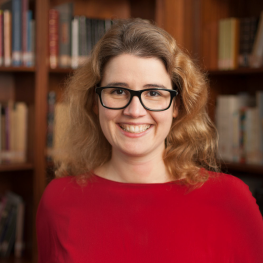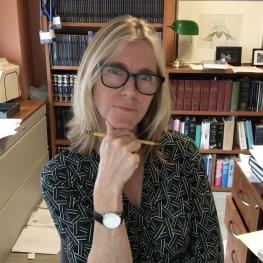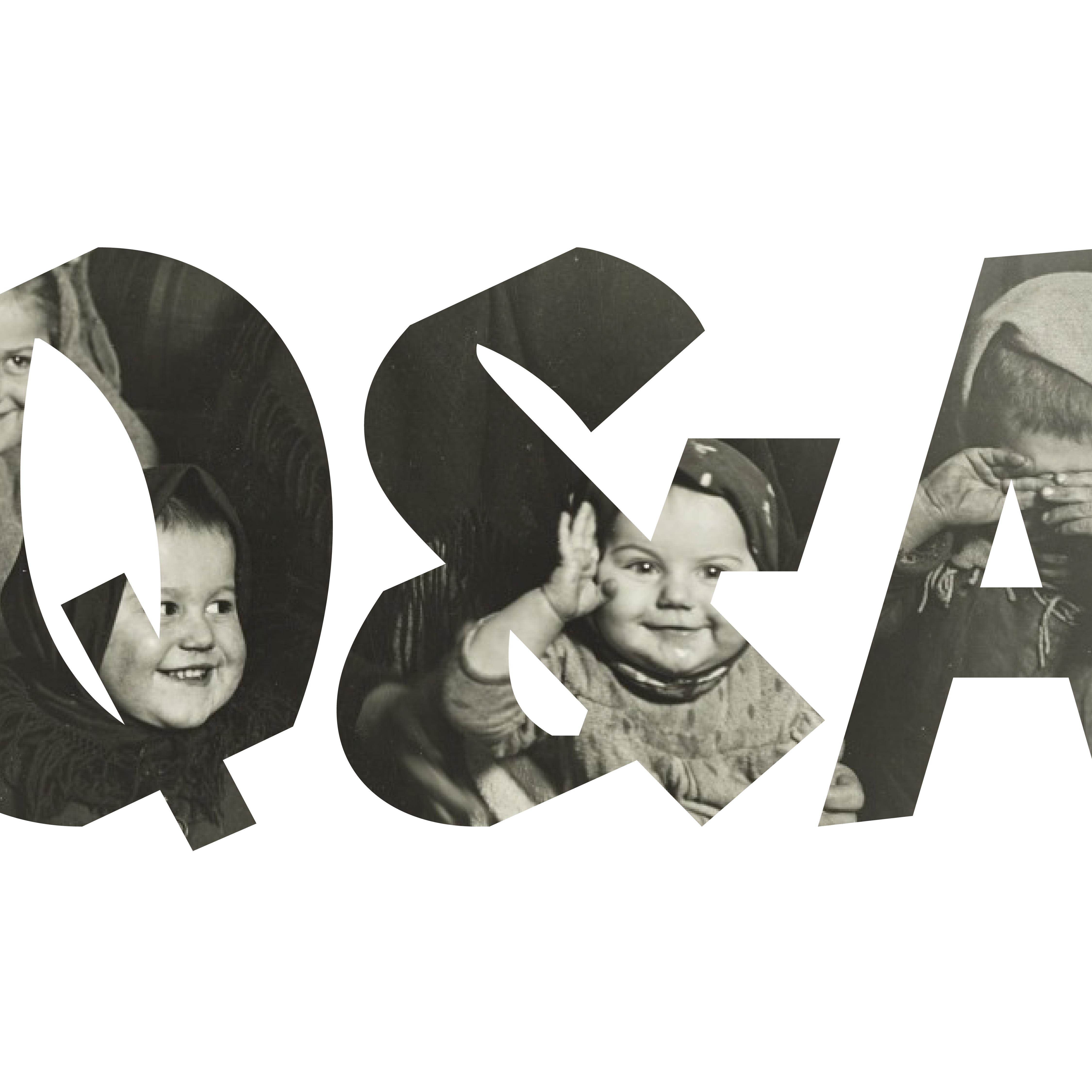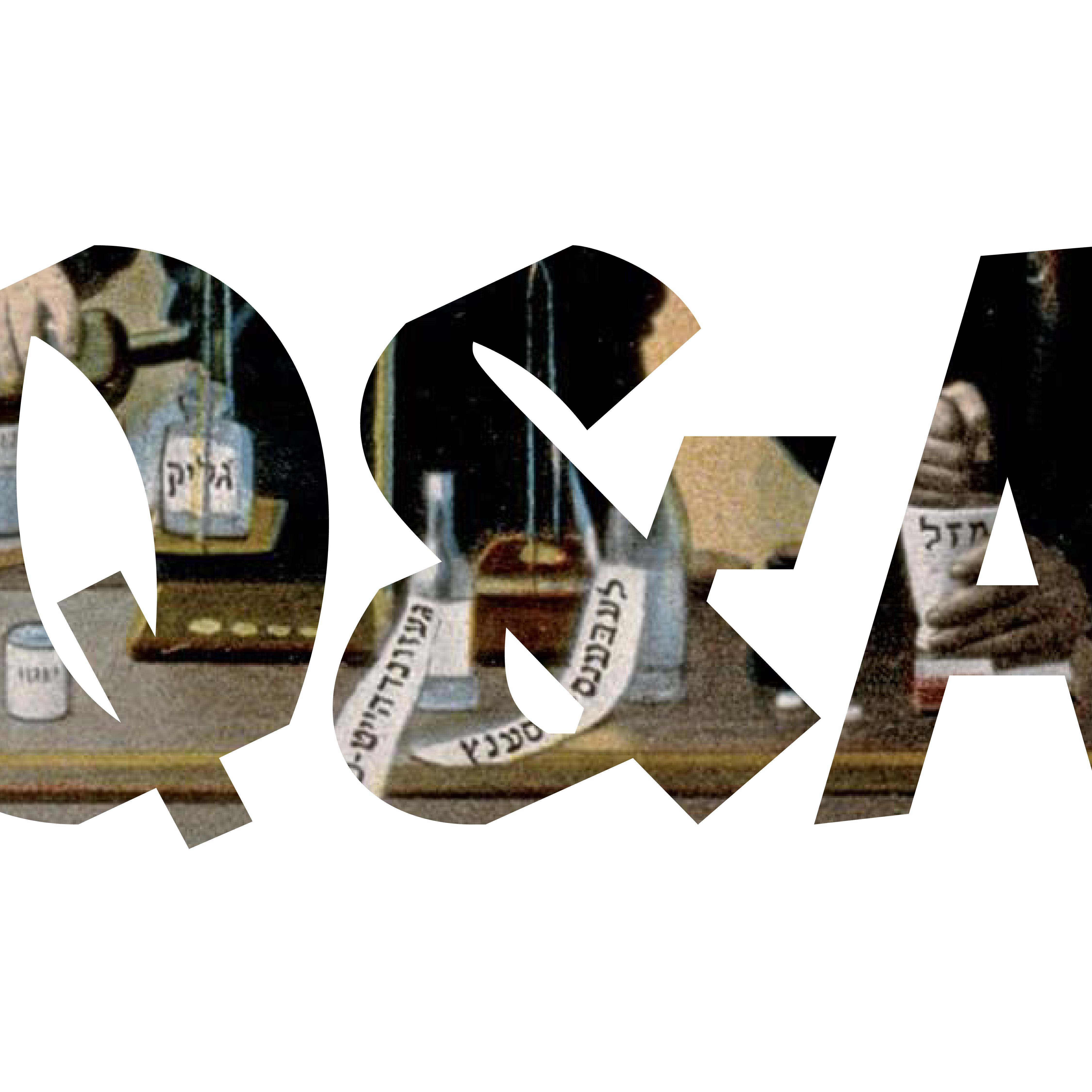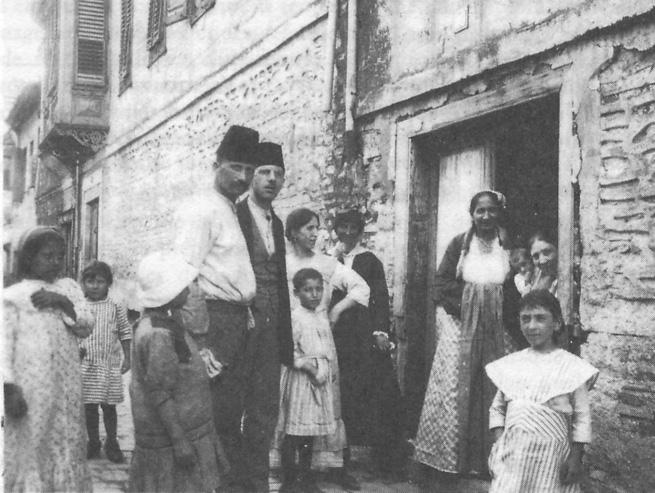Q&A: Katz Center Fellow Carla Vieira on the Key Role Played by Sephardic Physicians in the Circulation of Early Modern Scientific Knowledge
Q&A: Natalie Dohrmann talks with fellow Carla Vieira about her work following Portuguese Jewish doctors back and forth across the Atlantic, Caribbean, and Mediterranean seas, pausing to look at one significant visitor to eighteenth-century Philadelphia.
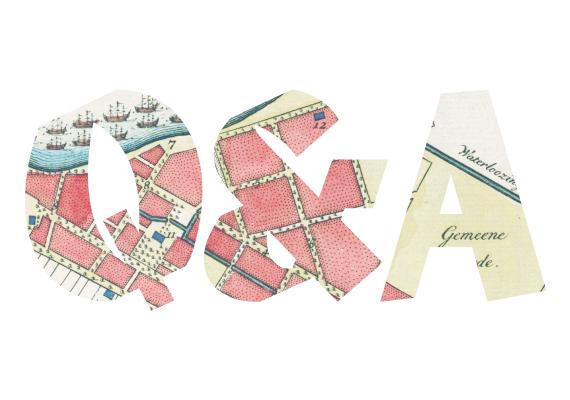
Detail from a map of Paramaribo, Suriname, and Berbice, 1767. Arnold and Deeane Kaplan Collection of Kaplan Collection of Early American Judaica. University of Pennsylvania Libraries
Natalie Dohrmann (NBD): Carla, tell us a bit about your scholarly interests. What drew you to them originally? What especially excites you about them personally or intellectually?
Carla Vieira (CV): Over the last few years, my research has focused on the Sephardic diaspora in the early modern Atlantic. However, my connection to this topic goes back a long way. While completing my master’s degree, I began collaborating with the Center Alberto Benveniste, a Sephardic studies research center at the University of Lisbon. There, I contributed to a biographical dictionary of Portuguese Jewish and converso merchants in the early modern period. This project was my first encounter with these intricate networks that spanned the Atlantic and Mediterranean, through which people, goods, information, and ideas circulated. It also introduced me to the complex issues surrounding conversos and the Inquisition’s persecution, which I later explored in depth during my Ph.D. studies. These experiences shaped the two main trajectories of my current research: the dynamics of religious persecution and segregation targeting conversos and Iberian Jews, and the Sephardic networks crisscrossing the Atlantic world.
Studying the so-called Western Sephardic diaspora is particularly exciting because it offers unique insights into many critical processes and tensions of the early modern Atlantic and Mediterranean. During the sixteenth to eighteenth centuries, Sephardim were nearly omnipresent, acting as brokers par excellence. They navigated geopolitical boundaries and interacted with individuals from diverse religious and cultural backgrounds. For this reason, studying the Sephardic diaspora is a gateway to understanding the broader dynamics of early modernity in the Western world. Moreover, this field of study also fosters interdisciplinary dialogue. I can give you an example. My research on the Sephardic merchant Aaron Lopez, one of the leading entrepreneurs in colonial Newport, led me to study sperm-whaling and the transformation of sperm whale products, namely spermaceti: Lopez traded spermaceti oil and candles, one of his principal businesses. This research brought me into collaboration with colleagues specializing in marine resource exploitation and facilitated my active involvement with an environmental history project, 4-OCEANS – Human History of Marine Life.
Another aspect I find particularly enthralling is the individual stories of conversos and Sephardim. As a historian, I see myself as a storyteller as well, and the Sephardic diaspora is rich with narratives of identity, resilience, and adaptation. These are stories of individuals who rebuilt their lives in unfamiliar places, often crafting new identities while maintaining ties to their Iberian heritage and culture. This cultural continuity served as a unifying factor for Sephardic communities, whether in Amsterdam, London, Italian cities, Caribbean ports, or here in North America.
NBD: Your scholarship has shown that Sephardic physicians operated as knowledge brokers in the early modern world. Why was this so? How broad were their networks? Why is this significant?
CV: It is easy to imagine that the same cross-imperial Sephardic networks through which goods and capital flowed also facilitated the circulation of new ideas, theories, and technologies. While the economic impact of Sephardic trade networks on the early modern Atlantic has been extensively studied by scholars like Jonathan Israel, Wim Klooster, and David Studnicki-Gizbert, among others, Sephardic knowledge networks have not received comparable attention. I believe, however, that this is a fertile and promising field for further research.
Focusing on the eighteenth century—the period I have studied most closely—these knowledge networks often intersected with broader scientific networks, such as those represented by the main scientific societies of the time, including the Royal Society of London and the American Philosophical Society. Although only a few Sephardic learned men were members of these institutions, their profiles and trajectories reveal much about their roles as brokers of knowledge. These roles were instrumental in their integration into the scientific elites of cities such as London, Amsterdam, and Philadelphia.
Most of them were physicians, deeply embedded—either personally or through family connections—in the trade networks linking European metropolises to American and Caribbean colonies. Through these networks, they accessed information about new plants and animals from the so-called New World, as well as non-European technologies used to exploit these resources, for food production or medicinal purposes, for instance. Additionally, their high mobility—often due to forced displacement—brought them into direct contact with diverse cultural realities and improved their linguistic abilities. In fact, a defining characteristic of Sephardic members of eighteenth-century scientific societies was their multilingualism, which further allowed them to act as agents of knowledge transmission across cultures. One notable example is Isaac de Sequeira Samuda, the first Jew elected as a fellow of the Royal Society of London. Proficient in Latin, Portuguese, and English, Samuda played a pivotal role in disseminating astronomical observations made by Jesuits in various parts of the globe.
NBD: The evidence you presented at your seminar at the Katz Center was deeply rooted not just in Philadelphia but in the immediate neighborhood of the Katz Center! Why is Philadelphia important to your story? Can you give an example of something you discovered here that impacted your work?
CV: Philadelphia marked a turning point in the life of David Nassy, a Surinamese author and health practitioner of Portuguese-Jewish background. Over the past few months, he has been the focus of my research and the central figure of the paper I presented at the Katz Center. Although Nassy’s stay in Philadelphia was brief (1792–1795), it was profoundly transformative for him. He arrived in the city after experiencing financial and reputational setbacks in Suriname. When he returned to Paramaribo in late 1795, he was a different man: a member of the prestigious American Philosophical Society and a celebrated physician who had gained recognition during the 1793 yellow fever outbreak. While in Philadelphia, Nassy encountered the ideals of equality and freedom that defined the new republic, ideals that would later influence his writing of Lettre Politico-Theologico-Morale sur les Juifs (1798). At the same time, he met refugees from the Haitian Revolution who arrived in large numbers during the summer of 1793. This encounter profoundly shaped his views on the abolition of slave labor, as evidenced by a manuscript I recently found in the Dutch National Archives.
Although many details of Nassy’s social and professional ascent in Philadelphia remain unclear, one fact is undeniable: the key moments of his rise all occurred within the area where the Katz Center stands today. Nassy lived and had his pharmacy in several locations between Market and Chestnut Streets and 2nd and 3rd Streets. He attended religious services at Mikveh Israel synagogue, then located on Cherry Street (between 2nd and 3rd Streets). He published his short account of the yellow fever epidemic through Parking & Company, a printing house near 2nd and Market Streets, and became a member of the American Philosophical Society (APS), located just around the corner from the Katz Center.
The APS archives also preserve one of the most fascinating manuscript sources from Nassy’s time in Philadelphia: a paper he presented to APS in February 1794. In this writing, he provocatively criticized modern botany, arguing that its theoretical knowledge was often disconnected from practical applications, particularly in medicine. The second half of the paper focused on a plant native to Suriname—the tikimma (Combretum cacoucia)—highlighting its characteristics and medicinal uses, and emphasizing the value of Indigenous and African knowledge on local plants. This manuscript encapsulates two core principles of Nassy’s scientific perspective: utility as a key principle for scientific production and the critical value of non-European knowledge systems in understanding natural resources.
NBD: You are deeply involved in the digital humanities. Can you tell us briefly about your work in this area? What do digital approaches to your field reveal that other methodologies cannot?
CV: My involvement in digital humanities began in 2021 with a project developed at my research center, CHAM – Centre for the Humanities at NOVA University of Lisbon—the Western Sephardic Diaspora Roadmap. I coordinated this transdisciplinary initiative alongside my colleagues Daniel Alves and Paula Ochôa—experts in digital humanities and information sciences, respectively. We merged methodologies from these areas to create an open-source web portal that provides detailed information on archival collections containing manuscript sources related to the Western Sephardic diaspora and its background.
Today, the WSD Roadmap offers data on over 800 collections housed in archives and libraries worldwide, including Penn Libraries’ collections. My primary goal in conceiving this project was to facilitate access to documentary sources scattered across numerous institutions, countries, and continents—a dispersion that poses significant challenges for researchers working in this field. By leveraging the possibilities enabled by digital humanities, the WSD Roadmap seeks to address and alleviate these difficulties, serving as a practical tool for students and scholars.
I think we all recognize that digital resources and tools have become indispensable to historical research. They have democratized access to primary sources and academic research, expanded the audience for our work, and broadened scientific networks to a global scale. In essence, they are transforming the way we produce and disseminate historical scholarship. However, these advances also bring numerous challenges. Issues such as digital curation, data preservation, and the use of AI must not be overlooked. After all, digital technologies are reshaping our societies and, consequently, historical research itself.
NBD: How does being part of a residential fellowship impact your scholarship?
CV: This fellowship at the Katz Center has been instrumental in advancing my current research. It provided me with the opportunity to revisit a question I first explored a few years ago—the relationship between Sephardic networks and eighteenth-century scientific societies—but had set aside in favor of other research lines. My time in Philadelphia enabled me to access critical sources to expand this inquiry, focusing on the case of David Nassy as a member of the American Philosophical Society. In the process, I uncovered new data that led me to even more compelling questions, such as the tensions between colonial and European-based medical practices and the political dimensions of scientific production, themes that are particularly evident in Nassy’s writings. These discoveries were made possible by the exceptional research environment and the time for reflection and writing that this fellowship afforded me. On one hand, access to the outstanding bibliographical resources of Penn Libraries was invaluable to my work. On the other hand, the fellowship gave me the rare opportunity to step away from the tasks and demands of academic life that often consume the time and energy needed for deep research.
Last but not least, this fellowship provided a unique chance to connect with an extraordinary group of scholars from diverse backgrounds. Their wide-ranging chronological, geographical, and methodological approaches to issues related to Jews and health enriched my perspective. They generously shared their research, experiences, and insights, which have been invaluable. This vibrant exchange of ideas and perspectives has had a profound impact on my research, and I am leaving Philadelphia and the Katz Center equipped with enhanced tools and renewed inspiration to continue my investigations.
